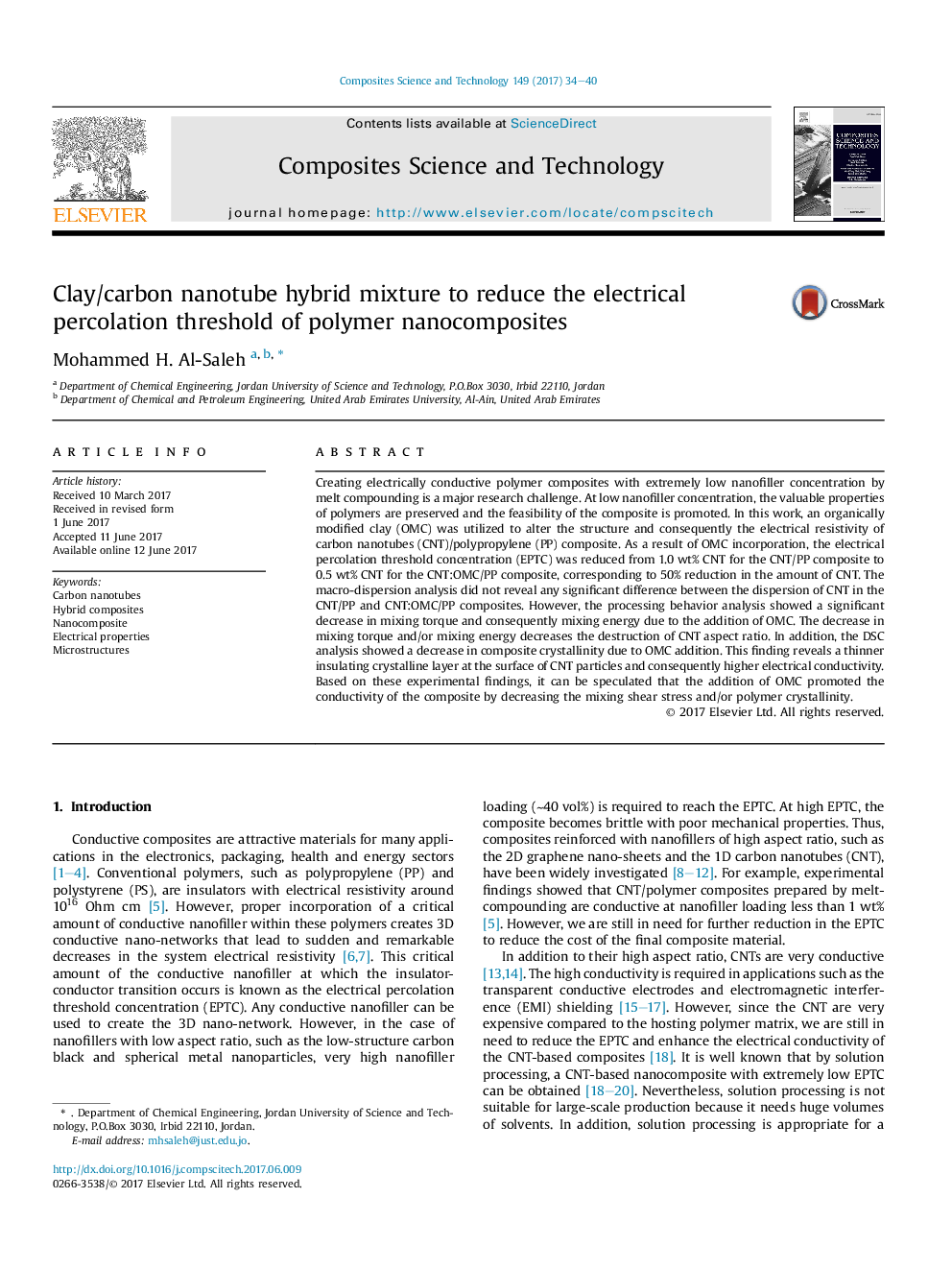| Article ID | Journal | Published Year | Pages | File Type |
|---|---|---|---|---|
| 5022034 | Composites Science and Technology | 2017 | 7 Pages |
Abstract
Creating electrically conductive polymer composites with extremely low nanofiller concentration by melt compounding is a major research challenge. At low nanofiller concentration, the valuable properties of polymers are preserved and the feasibility of the composite is promoted. In this work, an organically modified clay (OMC) was utilized to alter the structure and consequently the electrical resistivity of carbon nanotubes (CNT)/polypropylene (PP) composite. As a result of OMC incorporation, the electrical percolation threshold concentration (EPTC) was reduced from 1.0Â wt% CNT for the CNT/PP composite to 0.5Â wt% CNT for the CNT:OMC/PP composite, corresponding to 50% reduction in the amount of CNT. The macro-dispersion analysis did not reveal any significant difference between the dispersion of CNT in the CNT/PP and CNT:OMC/PP composites. However, the processing behavior analysis showed a significant decrease in mixing torque and consequently mixing energy due to the addition of OMC. The decrease in mixing torque and/or mixing energy decreases the destruction of CNT aspect ratio. In addition, the DSC analysis showed a decrease in composite crystallinity due to OMC addition. This finding reveals a thinner insulating crystalline layer at the surface of CNT particles and consequently higher electrical conductivity. Based on these experimental findings, it can be speculated that the addition of OMC promoted the conductivity of the composite by decreasing the mixing shear stress and/or polymer crystallinity.
Related Topics
Physical Sciences and Engineering
Engineering
Engineering (General)
Authors
Mohammed H. Al-Saleh,
